
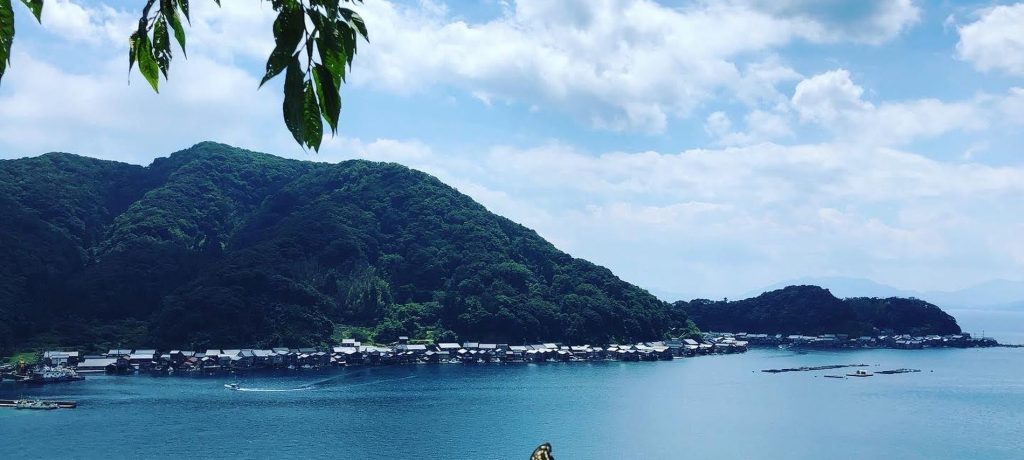
Welcome back to another ‘Inaka Tour’ of Kyoto prefecture. Once again, we’ll leave the city’s limits and venture into the countryside in order to find the hidden treasures of Kyoto’s often ignored rural landscape. With the Corona outbreak still far from over, surely now is a great time to get away from the crowds and stress, and experience instead some peace and quiet. This time, we head even further north, to Ine, a small fishing village on the coast of the sea of Japan, and home to some beautiful buildings as well as some stunning nature. While over 53 million tourists (both domestic and international) visit Kyoto city every year, only 300,000 tourists make it to Ine, making it a brilliant place to get away from all the hustle and bustle of the city. In fact, Ine is the second least populated town in the whole of the prefecture, making it hard to get any quieter. Ine’s foundation is ancient but somewhat unknown, except that it began as a key trade and exchange point between Japan (especially Kyoto prefecture) and the nearby Asian continent. It still thrives today on its fishing industry, and the local residents’ daily lives can be seen revolving around this trade; fishermen will sleep and rise early, fish can be found drying everywhere and the local architecture is specially designed to suit their living and working needs.
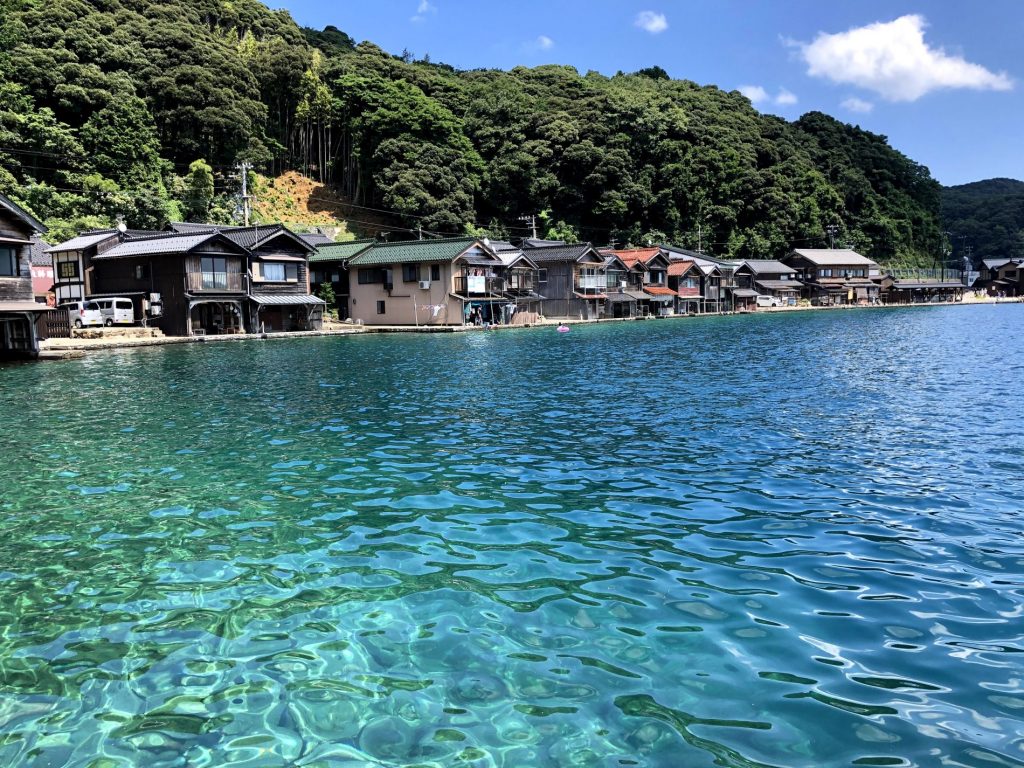
The Venice of Japan!
Aside from the small town seaside charm that Ine has to offer, the main draw should be the unique architecture of the houses, or ‘Funaya’ as they are locally known as. The best way to see the Funaya is from the sea, where the houses’ uniqueness can be fully appreciated. The ground floor (first floor to those non-British readers!) is completely open to the sea and is used for mooring boats. Before the town received proper road access, the Funayas’ main entrances were from the sea, and there was little need for a back door.
The berths also often include a workshop space for maintaining the boats as well. The upper floors are reserved for living in. There are currently over 200 funaya in the town, with the vast majority still being used for fishing families, though there are a few that are used as guest houses.
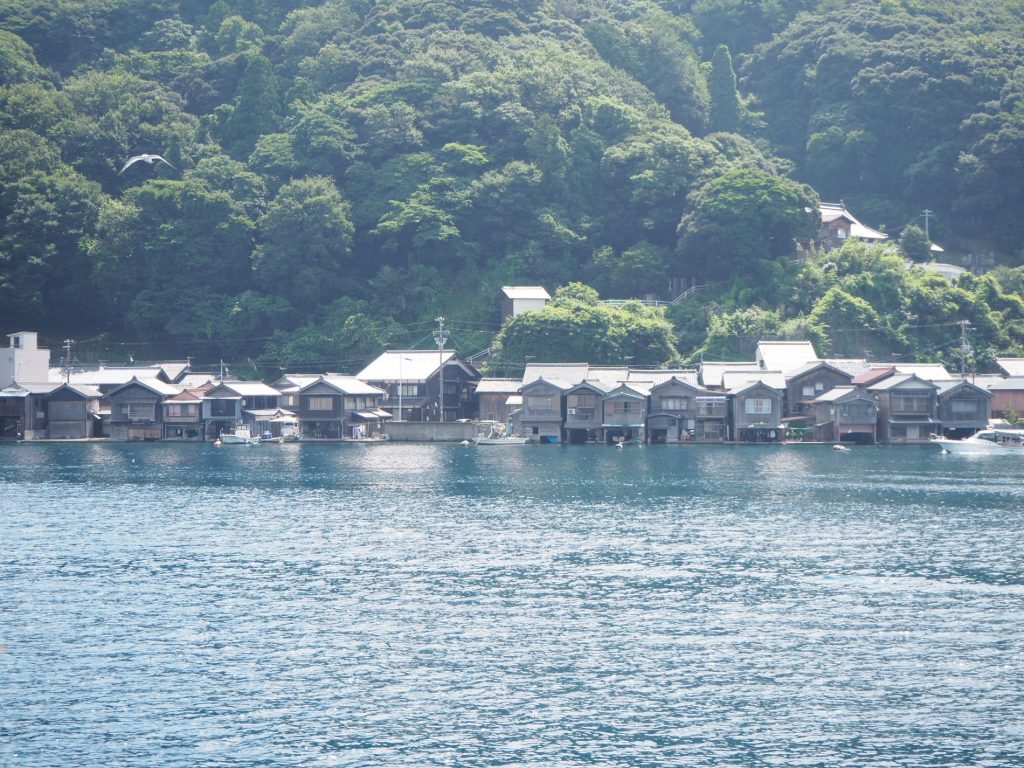
The view from the sea
Funaya have always been made of wood, often pine, and have been around since the middle of the Edo Period (1603-1868). The earliest Funaya were likely one storey buildings with thatched rooves, but changing living styles meant that the current two storey designs were adopted. While the funaya look to be easily destroyed during high tides or stormy weather, the locals will assure you that due to the geography of the bay and the position of the mountains, they are in no danger whatsoever. Residents claim much calmer weather than Kyoto city itself.
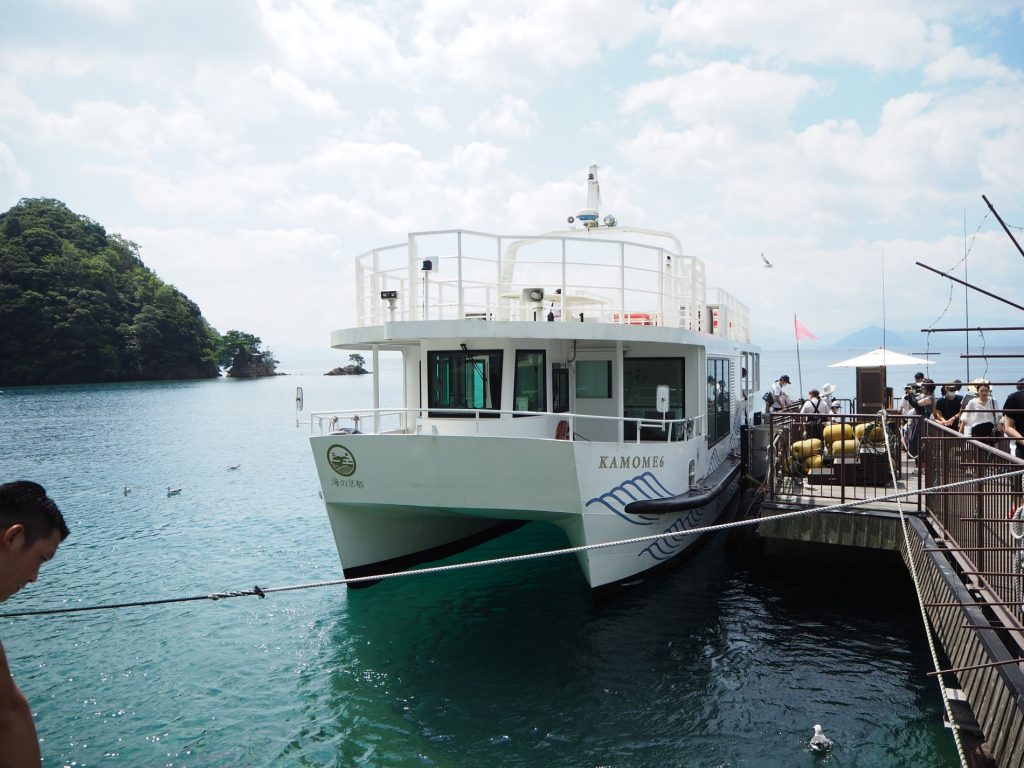
The tour boat from Hiji Station
To see the funaya from the sea, there are two options: private tour or group tour. The private tours, also known as sea taxis are chartered from within the town itself, and offer a closer look at the houses with far less people. The boats are a little rockier though, and the cost is higher, but the experience is a little more intimate. The group tourist tour boat can be found outside Ine town, at Hiji Station harbour and while the cost is cheaper, the number of people is much greater (max 150). The tour boat also has an added attraction of seagull and black kite feeding. Dozens of the birds will follow the boat for the first 15 minutes of the 25 / 30 minute tour, and you are able to buy snacks to feed them. It’s impressive to see the birds catch the food in midair, but watch out for the kites as they will swoop down from behind and grab whatever they can get their sharp talons on. Expect to hear many Japanese shouts of ‘Itai!’ (ouch!) and ‘Kowaii!’ (scary!).
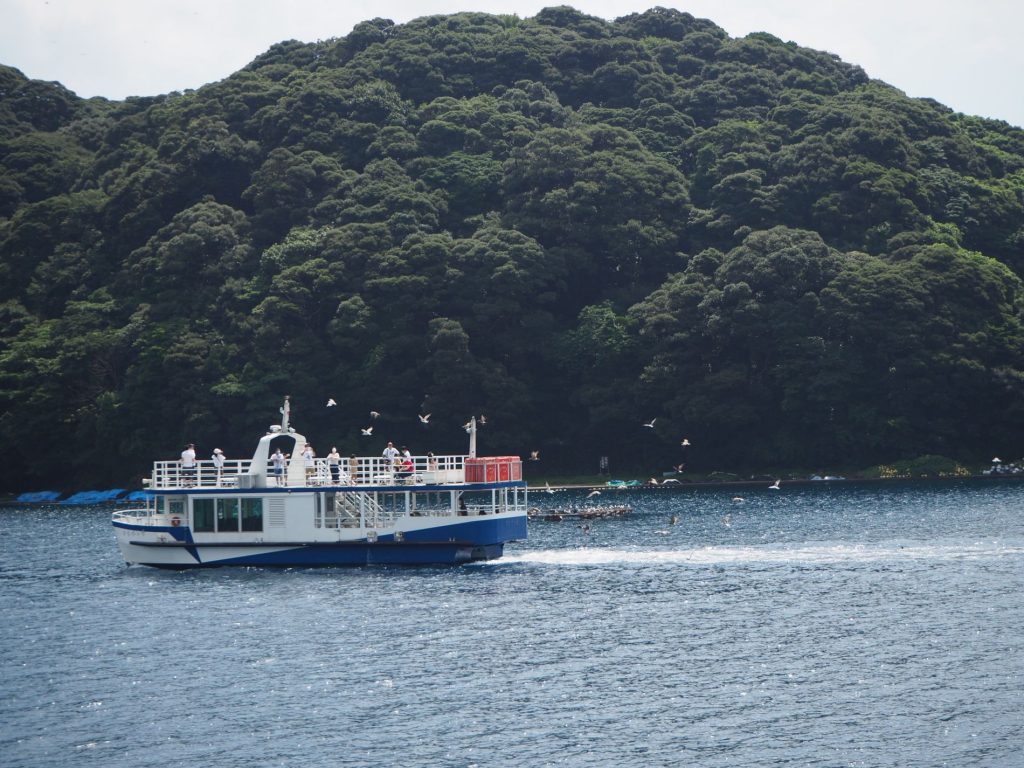
You will be followed!
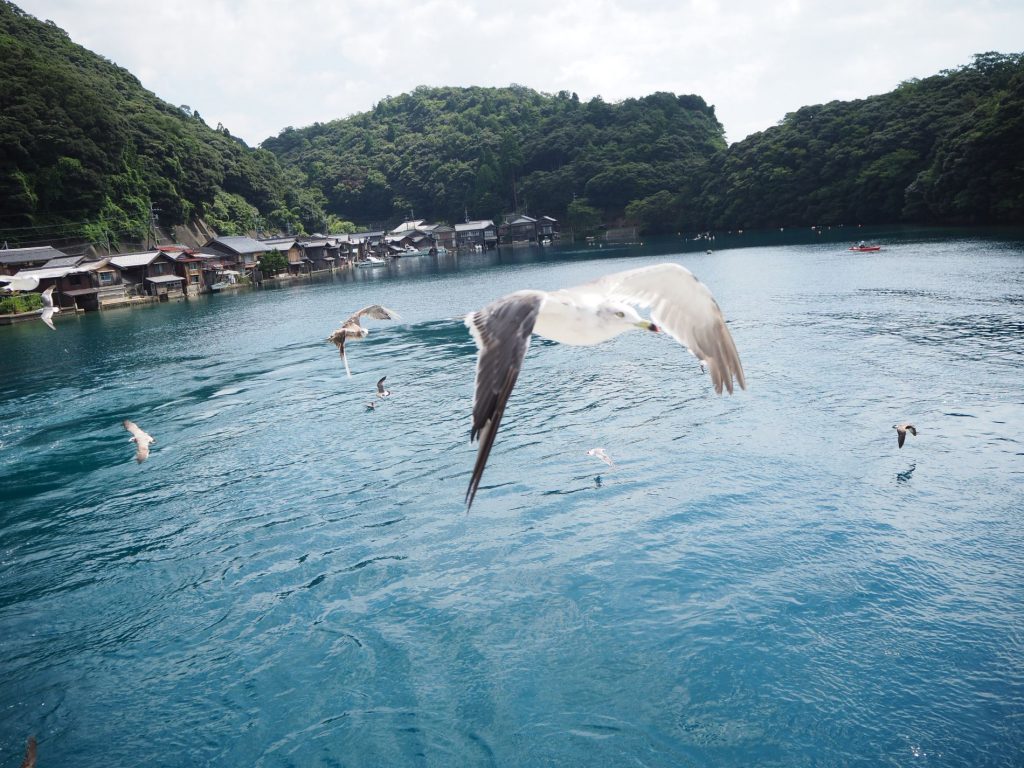
Up close and personal
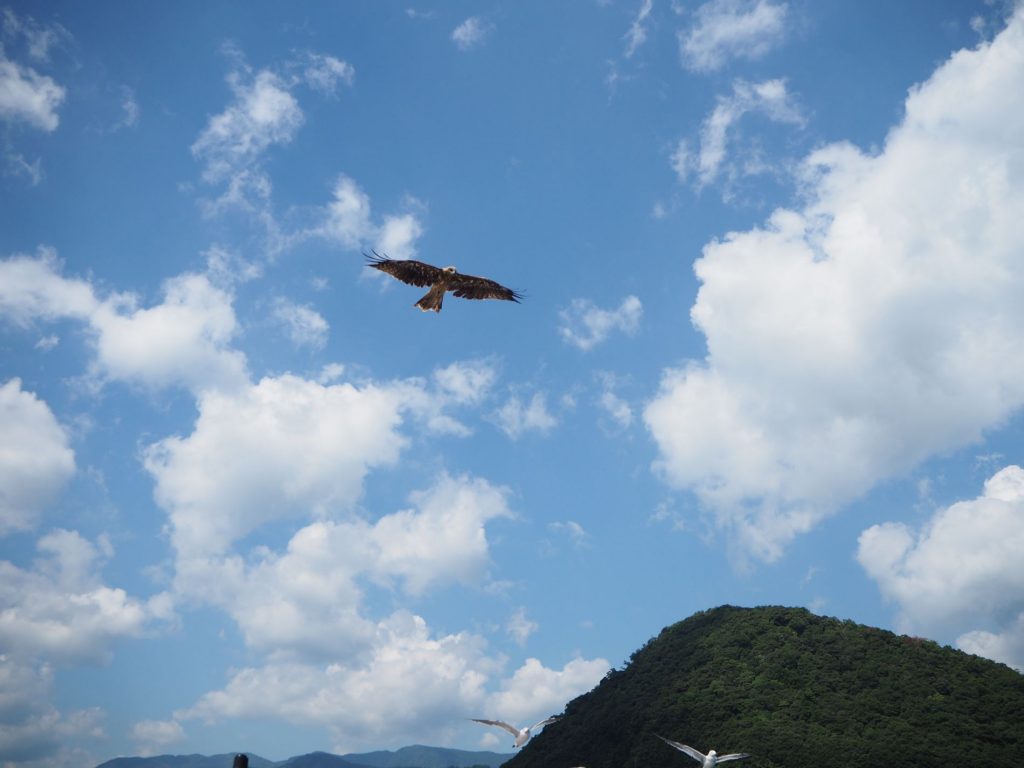
Watch out for the swooping kites!
People will often say that the land side of Ine has little to offer, and that simply taking a group tour from outside the town will be enough to satisfy, but please ignore these people! Inside the town, there are several hidden treasures.
Firstly, just walk around the narrow streets and breathe in the atmosphere. Some of the Funaya may be explored (locals are obviously a bit touchy about people nosing around their houses, so make sure the one you’re peering into is actually open for sightseeing!), and seeing the boat moorings up close gives a greater understanding of how people live.
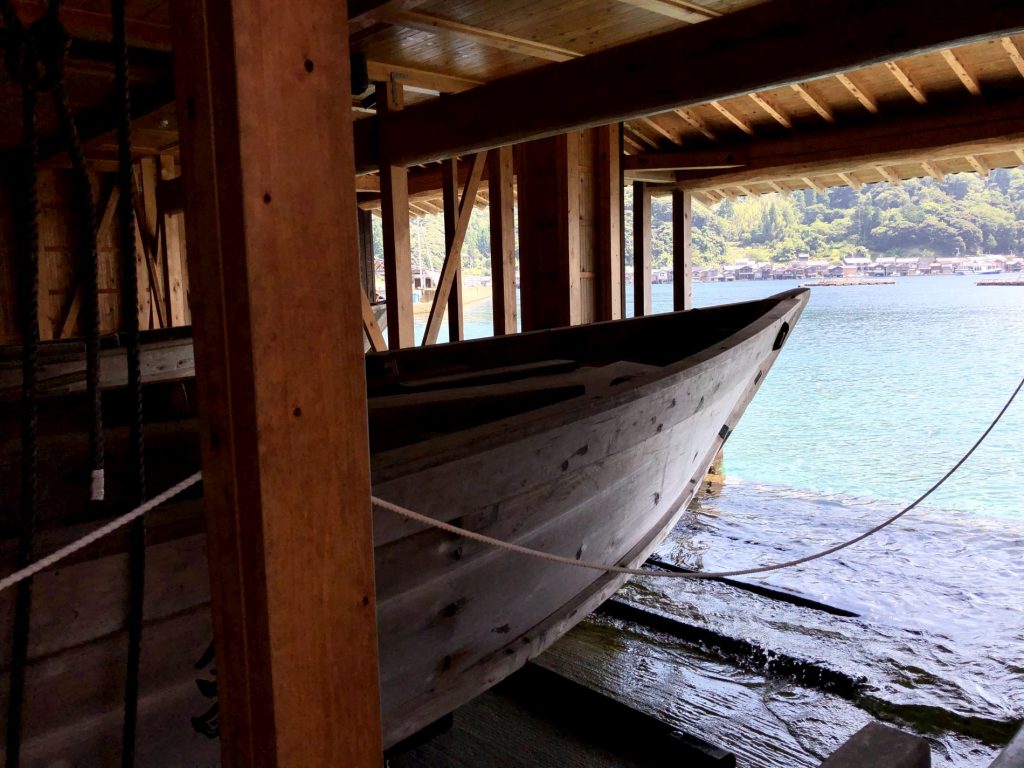
One of the funaya berths
Some of the funaya are also used as cafes and ‘Ine Cafe’ is easily one of the most beautiful places to enjoy a drink in the whole of Japan. On a sunny day, dipping your feet into the perfectly clear water and looking out over the stunning bay beats the tour boat any day!
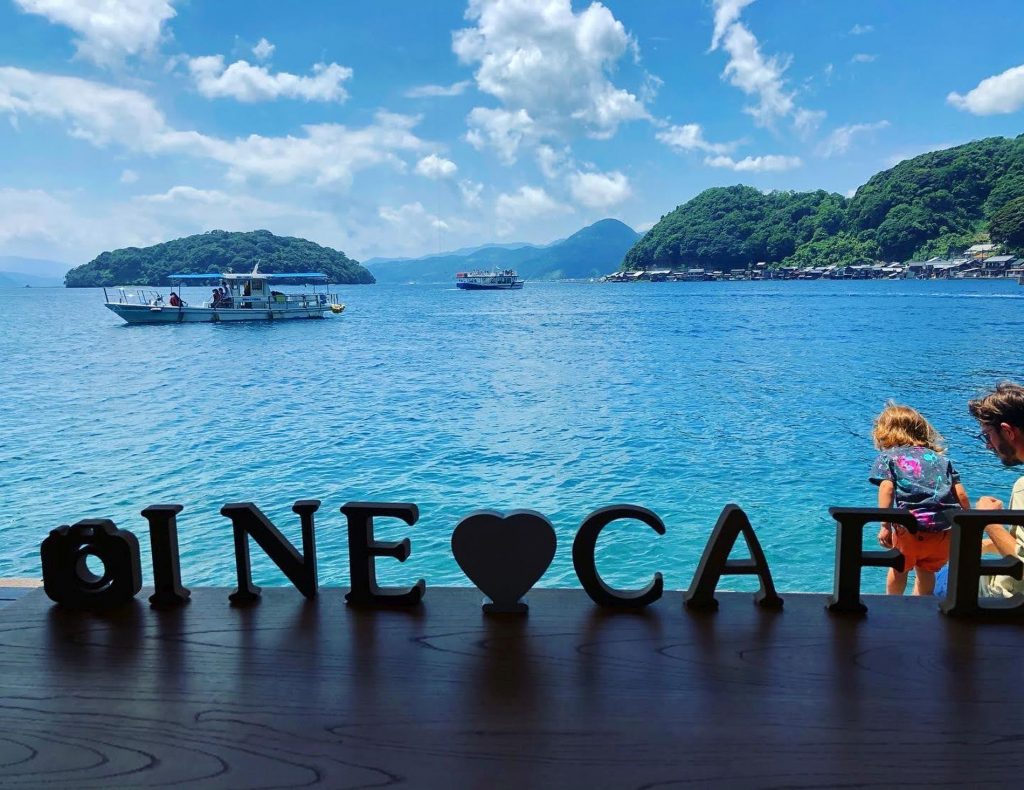
The most beautiful cafe in Japan!
Climbing up the mountain behind the city will take you to the town’s Michi no eki. Translating to ‘roadside station’, a Michi no eki is more like a local produce and souvenir market. Ine’s once again offers great views of the bay, and there are a few restaurants where local fish dishes can be enjoyed along with the stunning view.
Ine is a little out the way, but even the route there is rewarding. On the way, be sure to stop at Amanohashidate, The ‘heavenly bridge’. It’s a 3.6km sandbar covered in pine trees, that is known as one of Japan’s three most scenic views, (the other two being Matsushima Bay in Sendai, and Miyajima island in Hiroshima). The sand bar is said to resemble a bridge connecting heaven and Earth, an effect enhanced by looking at it upside down with your head between your legs!
There are a few places to view the heavenly bridge from, but the most popular include ‘Amanohashidate Viewland’ and the viewpoint above Nariaiji temple. Viewland is a park accessed via cable car and offers a head on view, whereas the Nariaiji viewpoint is a little out of the way and offers more of a panoramic view of the bay and surrounding landscape. Nariaiji will be much much quieter, although the angle of the sandbar may make it less spectacular compared to the rest of the landscape.
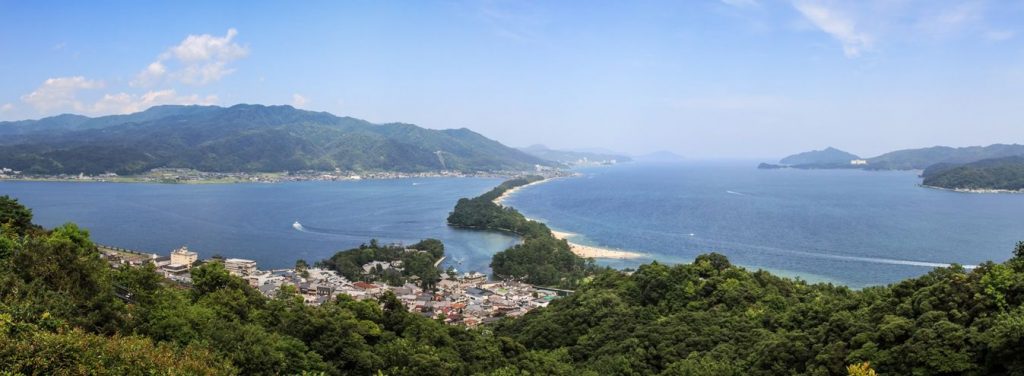
Amanohashidate from ‘Viewland’
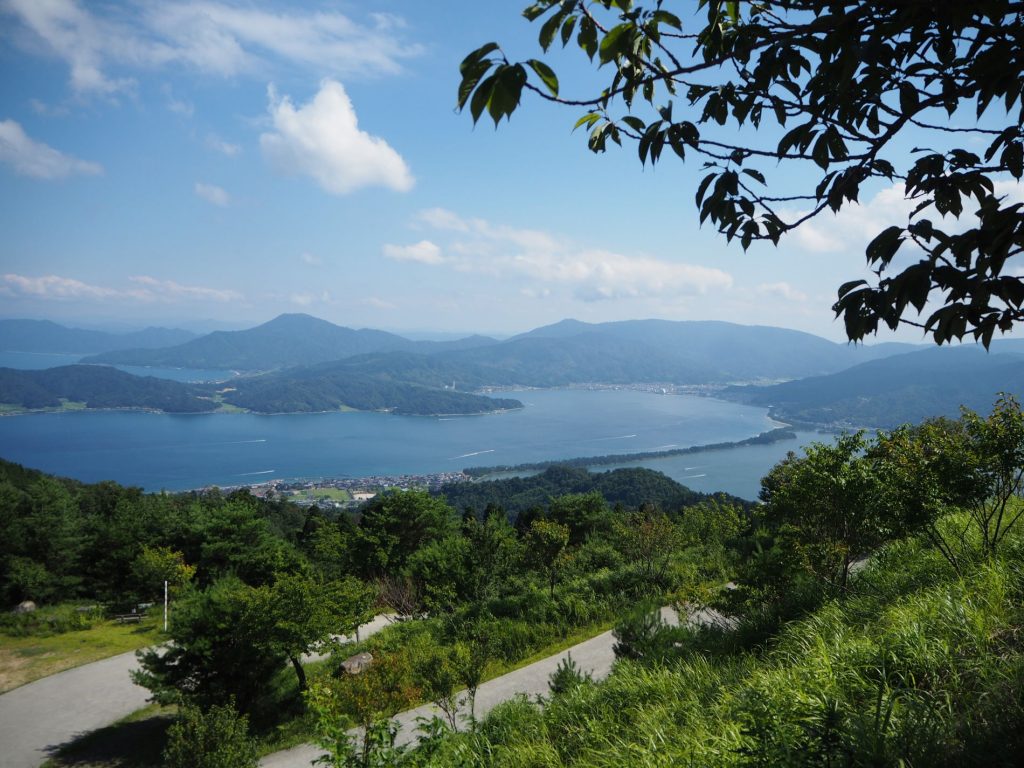
Amanohashidate from above Nariaiji - It’s a little anticlimactic….
Although Ine and Amanohashidate are somewhat out of the way, both are amazing places in Kyoto’s Inaka and you’ll be rewarded for taking the time to get there. If you’re short on time and can only visit one, Ine is the clear winner – while people may call it the ‘Venice of Japan’, this does kind of sell it short. Instead of seeing it as a second rate Venice, think of it as one of Kyoto’s (if not Japan’s) most unique and beautiful places.
Places mentioned in the article:
Name: Ine no funaya
Location: 626-0423 Kyoto, Yoza District, Ine, Hirata, 77
Website:
Phone number: 0772-32-0501
Email: NA
Name: Hiji Sation boat tour
Location: 11 Hide, Ine, Yoza District, Kyoto, 626-0425
Website: https://www.inewan.com/
Phone number: 0772-32-0009
Email: info@akarenga-park.com
Name: Amanohashidate
Location: Monju, Miyazu, Kyoto 626-0001
Website: https://www.amanohashidate.jp/
Phone number: 0772-22-8030
Email: NA
Harry Hammond is an Englishman lost in Kyoto, with a passion for history and architecture. He loves finding the hidden stories and history behind both the famous and the unknown buildings that shape this beautiful city.